This post on photography tips is brought to you by your fellow photo lovers at Shutterfly. They encourage you to capture your memories and share your amazing pictures the way you want with their new Custom Path photo books.
I’ve learned a lot about photographing my home over the last several years. I look back at some of my early shots of the house (like the photos in this post featuring my library), and I cringe at how bad they are. Today I’m going to share all of my tips and tricks with you so that you don’t make the same mistakes I did! You can make just one of these adjustments to improve your shots, or you can combine several changes to really make a difference.
Tripod vs. Handheld
Use a tripod. Always. That’s rule number one, because it’s that important. Rule number two should be to turn off your flash.
Don’t Just Stand There
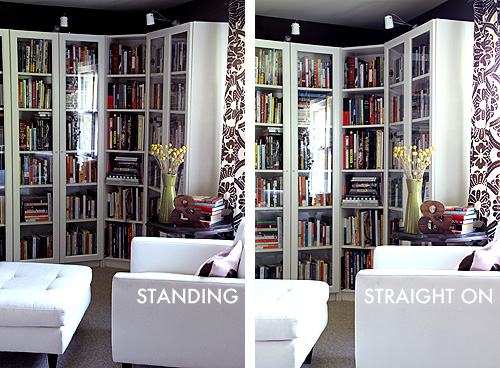
A lot of people make the mistake of taking pictures from a standing position. It looks amateurish. It’s far better to crouch down just a bit and lower your tripod. (You are using a tripod, right? Rule number one!) Photographing a room from a lower angle makes the ceilings look higher and eliminates weird perspectives from above.
Depth of Field
Want that pretty effect where the subject is in focus and the background is nice and soft? You want shallow depth of field. You use a wide aperture (small F-stop number) to get it. Want everything in focus and sharp? Use a higher number F-stop for deeper depth of field.
Lights On, Lights Off
This comes down to personal preference. My library has been photographed a couple of times by professionals (here and here), and one photographer turned off every light while the other turned them all on (and brought in a few more). I like the look of the photo above with the lights on, but the one with the lights off has truer colors. (Yes, the ceiling is a soft green.)
Proper Exposure
I was focusing on the same spot (the pillow), but that window was making the whole room look backlit. When I first photographed the library in 2007, all of my pictures had this exposure problem, but I had no idea how to fix it (other than trying like mad with Photoshop, to so-so results). I got a better shot here by keeping the aperture the same (to maintain the same depth of field), and decreasing the shutter speed to keep the shutter open longer and let more light in.
Practice Makes Perfect
I’ve been blogging about my home since 2007, so I’ve had a lot of practice and a lot of time to improve. Hopefully these tips will help you get a jump on your own photos and you can avoid some of my early mistakes!
Eventually I want to reshoot some of my older pictures. I would love to make a photo book of my house, maybe featuring a bunch of before and after shots (now that I can take better “after” shots!). Or wouldn’t it be great to make a book for you or your kids to remember their home by if you were moving to a new house? I would have loved a memento like that of my childhood home.
Are any of these tips new to you? Or do you have any you’d like to add?


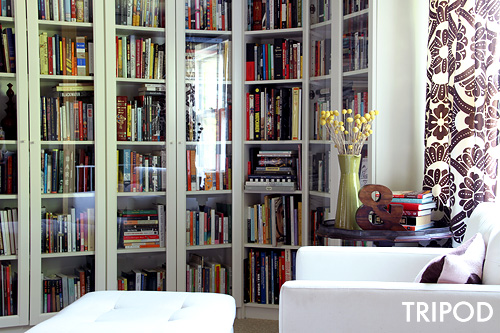


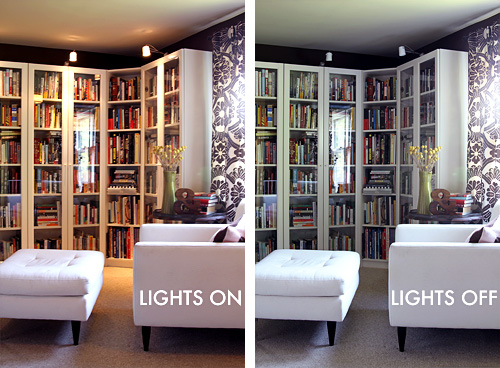
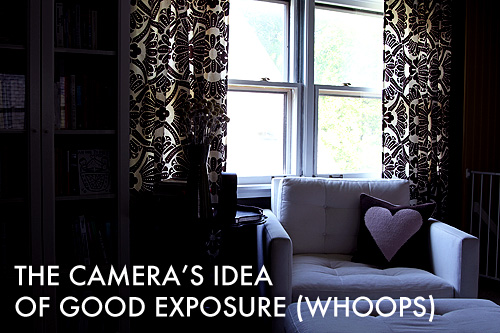
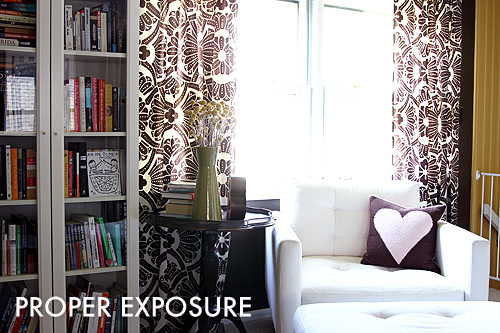
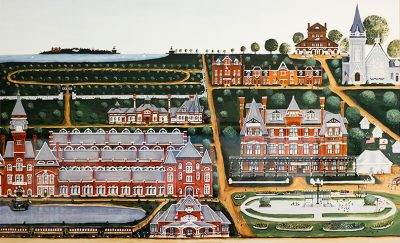

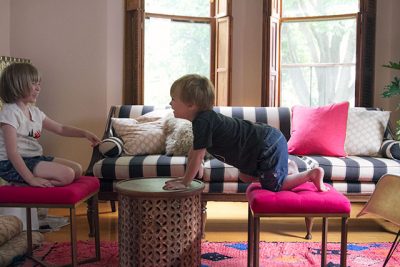
77 comments
kylie
Thank you, some great tips for us amateur photographers!!!!
Theresa Furey
Hi Nicole, while I think your photo tutorial is good. I don’t gree with everything you wrote. I don’t think you should always use a tripod. If you keep your shutter speed above 60 you shouldn’t have a problem with blur. If you need more light to increase your shutter speed (above 60) or open your aperture as far as possible (the lower numbers are more open, higher numbers less- ie. f2.8 is more open than a f11). Remember if you are in manual shooting and increase your aperture, you’ll effect your shutter speed. Second on this point, is that if you do need to use assistance because you can’t raise your shutter speed above 60, you don’t need to run out and buy a tripod, a table and some books will do just fine or just as good and equally priced are monopods- much less hassle then setting up a tripod.
I completely agree with your don’t just stand there. Often the best and most attractive images are ones taken from a different point of view, which is why are eyes are drawn to them.
Lastly, exposure. Its always better to over expose then under by rule. This doesn’t mean white wash all your photos…that’s no good either. Blacks are harder to bring up then recovering from white. I find when shooting into the light set on manual that I always move my exposure setting to the left by four or five bars I get an accurate forground and background light representation. You definitely have to look at the images as your taking them and adjust according. AS I always say, if in doubt…snap it out. What I mean is take several shots of the same thing playing with the exposure and nothing else, one will end up working and you learn from the whole process ;)
Hope this wasn’t to critical of me. Overall you did a great job explaining for the novice x
Best,
Theresa
Theresa Furey
Hi Nicole, while I think your photo tutorial is good. I don’t gree with everything you wrote. I don’t think you should always use a tripod. If you keep your above 60 you shouldn’t have a problem with blur. If you need more light to increase your shutter spped open your aperture ass far as possible (the lower numbers are more open, higher numbers less- ie. f2.8 is more open than a f11). Second on this point, is that if you do need to use assistance, you don’t need to run out and buy a tripod, a table and some books will do just fine or just as good and equally priced are monopods- much less hassle then setting up a tripod.
I completely agree with your don’t just stand there. Often the best and most attractive images are ones taken from a different point of view, which is why are eyes are drawn to them.
Lastly, exposure. Its always better to over expose then under by rule. This doesn’t mean white wash all your photos…that’s no good either. Blacks are harder to bring up then recovering from white. I find when shooting into the light set on manual that I always move my exposure setting to the left by four or five bars I get an accurate forground and background light representation. You definitely have to look at the images as your taking them and adjust according. If in doubt…snap it out. What I mean is take several shoots of the same thing playing with the exposure and nothing else, one will end up working and you learn from the whole process ;)
Hope this wasn’t to critical of me. Overall you did a great job explaining for the novice x
Best,
Theresa
jennifer@nicolejanehome
Thanks so much for the tips. You just summed up what my 10-week photography course taught. Well done!
Rosa @ flutterflutter
Just started blogging in November, and just got a DSLR two weeks ago… time to start figuring this stuff out! Thanks for all your tips!!
EM
Thanks for the tips! Also, when using a tripod, I’ll take multiple shots at different exposures and photoshop the best parts of each (to fix things like the blown out window and chair). Of course sometimes it’s more work than it’s worth
Michelle
Thanks so much for the tips! I was only thinking to myself how horrible the photos on our blog are and how come everyone else’s blog photos look so amazing. Now I can try these out and maybe improve the pics :-)
becky
This was EXTREMELY interesting and helpful. Thanks!
Sarah MacMillan
Thanks for these great tips! I’ve been trying to get some decent shots of my home for a while now. Interior photography is hard! But with these tips I now feel better prepared and inspired. Try try try again.
Jane
Thank you so much for these tips! Interior photography has been much of a mystery for me.
elissa @ faucethead
these are great tips. sometimes i think it’s easy to assume that better equipment will get you better results but there’s so much you can do to manipulate a space without it!
CPB
Great post Nicole, thanks.
An easy oversight to make, especially when the room is your own is not de-cluttering. Don’t go over the top; you still want a welcoming, lived-in look, but the devil is in the detail.
Also, think about adding some human interest. Using a tripod and a longer exposure, experiment by having somebody (with your camera on timer, it might be you) walk through the shot. Because of the slow shutter speed, they’ll blur, adding an interesting effect. Just make sure they’re in the background, not the main focus. Tough to get right first time, but that’s the beauty of shooting digital.
Danielle
Thanks so much for these tips! I will definitely utilize my DSLR a little better now.
meryl rose
I make a photo book every year with Blurb for my boyfriend as a present. I put the book together like a story by including bits and pieces of text from my blog and his webpage. I’ve only been doing it a few years and it’s always so fun to look through.
Sheesham Furniture
Great tips, thank you. I will be sure to use these when photographing rooms in the future.
A handy tip for when you don’t have a tripod (I always forget mine): Use any stable surface to hold the camera and make sure to use the timer function so you don’t get any camera shake. If there’s no stable surface, hold your breath and use your chest to steady the camera (or the top of your belly if you’re a 17st chap like me).
Alicia
This is SO helpful and timely for me – I just realized this week that I need a tripod ASAP. Do you have any tripod recommendations? It seems they span from $20 up to over $1000 and everything in between. I really don’t want to spend a lot, but wonder if there’s a base level that I should look at for use with my Nikon D50. I’m not planning to use any super-heavy lenses.
thanks!
Nat@ dear little house
Bracketing your shots can save you a bunch of time too! Also, never trust the screen on the camera and don’t delete until you’re on the computer.
PS I’m having a photography giveaway on my blog if you’re interested :)
Béa
Thanks³
Filipa
Hi
what a great post and blog.
I didnt understand how u do the ” proper exposure”.
Can u explain it?
I have a canon DSLR
emma
Great tips!!!
Thanks for sharing its.
G
Thanks ! Love this post and love that you took 2 pictures to show each point ! It shows the difference each change makes. Awesome post !
Kate
Hi Nicole! That was really helpful. And very timely, I put up my first photo of my living room today. I’d love a post from you on “Five Important Tips for Styling”. Your pix always look amazing.
Joi
Thanks for the tips! This confirmed my thoughts that I definitely need a tripod! I have the shakes at 28! Oops!
Lauren L.
Great post! Do they make tripods for point and shoot cameras? I have a little Cannon while I am saving up for my first SLR.
Making it Lovely
As long as your camera has a place for the tripod head to screw into (and most cameras do), you can use a tripod.
Nick Klaus
The great thing about digital is that you can experiment to your hearts content, and if none of the photos turn out, you can always delete them.
If you’re afraid of using the manual mode, the easiest trick is to set the camera to AV or TV, see what the camera says you should use and then enter those values into manual mode. After a while, you start to get a feel for what settings should go with the look you’re going for. There’s also a helpful meter at the bottom of the viewfinder, if you look for it.
Making it Lovely
Exactly. That’s how I got more comfortable with my camera.
Kate
Great tips! I am hoping to dip into photography into the near future and take lots of pictures of my own home!
Lauren-Ashley
I’m so glad I read this. These are excellent tip that are easy for me to understand, I definitely will be using them.
Sarah
This is *just* what I needed to see this morning. I started a blog about our adventures as first time home owners (it’s been 1 month) and my pictures have been driving me crazy. I keep photographing the same room over and over trying to get rid of the blurry/dark spots and this is going to be sooo helpful.
THANKS!
heather e.
thanks so much for this post…we’ve just started a blog about our new home, and our photography skills are definitely lacking. this will be a BIG help! :)
Amanda
Great tips – thank you so much! All very helpful :)
itziar
Great ideas!
But we need a home like yours to get such an amazing photos…
Alison
Thank you!! Your photo tips are so helpful and easy to understand – and the best part: they seem do-able (not like some of the confusing things you read in manuals or other blogs). I also want to try the online photo class you suggested a while back (as I just got a shiny new Nikon!).
samantha
Just seconds ago I was trying to get a good photo of my newly decorated living room, thanks for these tips I will try them out. :)
RLG
you are awesome.
thank you for this post.
xoxo
Michelle
What camera do you use? It looks like a canon in other photos. Can you make any recommendations?
Making it Lovely
I have a new Canon 7D (that’s what I used for these photos). Before that I had a Canon Rebel XT (350D), and I also have a G10.
Michelle
oh great! thanks I think i might start out with the Canon Rebel XT. We are having a baby (well any day now) and this would be a great gift for the Mister.
Carla
This is hugely helpful! Thanks!
Kristin
Love this, thank you! I need to learn the manual settings. But for now my bother set up the av and tv modes to take better pics than auto. I will def. Be trying out some of your tips.
Making it Lovely
I learned my camera in the AV and TV modes before jumping to fully manual. It’s a great way to get more comfortable with the settings.
Charlotte
Thanks so much for the great tips! They will be very helpful. Now I guess I need to learn how to use more features on hubby’s fancy camera…
Lizzie @ Pretty City Things
Great post – I am guilty of at least a couple of those camera crimes! Thanks!
Alison @ The Peacock Diaries
Thank you! I will be subletting my apartment this fall and I have been worried about being able to photograph its 400 sq ft of splendor adequately. I am signed up for a Nicole’s Class in July (again, thanks to you!), but this is definitely a great resource.
I’d like you to do a post on reading my mind…I’m wondering how you do it. Because you are always writing about exactly what I need!
Jill Browning
Thank you for this post! Looking into a tripod now!!
Jennie
Such great advice! Thank you!
Tanya from Dans le Townhouse
Great tips! But I think your “bad” library photos from your earlier post look pretty darn good to me!
iris
Oh, an important rule (especially if you’re keeping the flash off) is to only take photos during the daytime. Natural light is kinda useful for that.
Additionally, I’ve found I can use flash, but you have to bounce the flash off the ceiling or the wall (I use a cheaper flash gun with lots of freedom of motion for that.)
Making it Lovely
Yes! Definitely wait for the best natural light!
I’d like to play around with an external flash in the future. Thanks for sharing yours.
Catherine
Thank you SO much. I’ve read a few blog posts on taking indoor pics and they are typically so full of lingo I don’t understand that I can’t make sense of them. This makes sense – – and the only tip I’d read before was to keep the flash off. I especially appreciate the exposure tip. Our house is dark and if there ever is light, my pics seem to end up even darker. Thank you!
Making it Lovely
I’m so glad! I was aiming to make the tips as easy to understand as possible.
Giulia
I find the window the most difficult situation. You want the details of the actual curtains, chair, pillow etc, but I also don’t like the blown out window background. Sometime switching angles can help, I find.
Using the proper lens depending on the shot is important as well – using a 50 mm lens to capture the whole room won’t give you enough room to capture it.
I find a picture of a room looks different than how you perceive it three dimensionally. Look through the lens to see what you’ll capture, sometimes moving things closer together than how you have them set up normally will make the photo look much better.
Elissa
I once went to an architectural photography seminar that, admittedly, relied a lot on photoshop, but he recommended taking photos with windows at a few different exposures. then he would photoshop the correctly exposed window (the first photo) into the correctly exposed room (second photo). You obviously need a tripod to get the angles identical, and some practice so that the photoshopping isn’t obvious, but it can look pretty good!
Making it Lovely
Windows are by far the trickiest. I think I can still stand to make a few improvements, but certainly I’ve gotten better than I used to be. Thanks for bringing up the other tips too.
Kathy
Great tips……..Thanks Nicole.
But where did you get that wonderful bird/swan dish?
It’s fabulous.
Thanks,
-Kathy
Making it Lovely
It’s by Jonathan Adler. It was a Christmas gift from Brandon a couple of years ago!
jamie
SOOOOO helpful! i unfortunately don’t have an SLR but this is great to bookmark!
Making it Lovely
Most of the tips still apply to any camera! And a lot of point-and-shoots even let you control the shutter or aperture.
Midwest Magnolia - Melissa Lewis
Great Photography post. I am bookmarking it as a resource for when I get my first SLR camera, which hopefully won’t be too far from now!
Naomi
I just have one tip: If you are able to shoot from outside a window (window open, screen off), it’ll give you more space to work with. I do this usually with a wide-angle lens to add to the effect.
I do this often with newborn and small child sessions to give a sense of scale and smallness.
Making it Lovely
I like that idea. I’d have to stand on a ladder though!
Kelly
Nice, I need all the help I can get! I still am in AV mode on my DSLR
Making it Lovely
That’s not bad! I shot in the AV and TV modes forever before finally switching to manual.
Emily
What a great list of tips! I just upgraded my camera to a DSLR but it’s been sitting all by itself for a while because photography can be so overwhelming. These are a great start…off to go dig out the tripod!
Wendy
Great tips Nicole, thank you! Having a blog of my own makes me more aware of taking good pictures these days. Funny – I asked for a tripod for my birthday (next week)!
Mary Beth
I love the idea of making a photo book of your home for your children to enjoy in the future. I would dearly love to have photo books for the home of my childhood and my grandmothers’ homes. These are the sort of ideas that get lost in the rush of daily life and then, in the future, one mourns the lost opportunity. Go for it…your children will love you all the more for your thoughtfulness.
Mary Beth
Making it Lovely
I would love to have photos of my grandparents’ homes too.
Katie
All the important things I forgot from college photography class. Thanks for the great reminders.
Cristina
HAHA I was thinking the EXACT same thing!
Comments are closed.